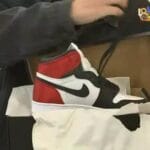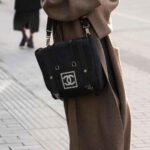Although fake and replica shoes are similar in some ways, there are actually significant differences, mainly in terms of legal status, quality control and sales methods.

Fake Shoes
- Legal status: Fake shoes are illegally produced, and they deliberately imitate the appearance, trademarks and packaging of branded shoes to deceive consumers into believing that they are authentic. This behavior infringes on the intellectual property rights of the original brand and is strictly prohibited by law.
- Quality control: The production of fake shoes often lacks strict quality control, and the materials and processes used may be far below the standards of authentic products, resulting in poor durability, low comfort, and even safety hazards.
- Sales method: Fake shoes are usually sold through informal channels, such as street vendors, unauthorized online platforms, etc., and the price is often much lower than the authentic ones to attract price-sensitive consumers.
There are some conceptual differences between fake and replica shoes. Fake shoes usually refer to sneakers that are not officially authorized and are made by unofficial factories or individuals. These shoes may differ from the authentic ones in terms of materials, craftsmanship, etc., and there is no official certification and guarantee. In the sneaker market, fake shoes are often associated with Putian shoes, which are famous for their high-quality imitation shoemaking technology, but are also controversial due to quality issues and lack of originality.
Replica Shoes
- Legal status: The legal status of replica shoes is more complicated. If the replicas do not use the brand trademark and only imitate the design, they may not be considered direct intellectual property infringement. However, the legal definition of this gray area varies in different countries and regions.
- Quality control: The quality of replica shoes may vary from producer to producer. Some high-quality replicas (sometimes called “high imitations”) may use high-quality materials and fine craftsmanship to strive to be close to the original in appearance and comfort. But some replicas are of poor quality and far from the original.
- Sales method: Replica shoes may be sold through various channels, including online marketplaces and physical stores. Consumers are usually clearly informed when the product is sold that it is a replica and not pretending to be an authentic product.
Replica shoes may refer to counterfeit items, especially artworks or reprinted paintings and calligraphy documents, which use certain techniques to replicate the appearance of the originals, but are usually not used to deceive consumers, but as a form of collection or display. On the other hand, replica shoes have their unique value in the field of art. They can be used for education, aesthetics, protection and other functions, helping people better understand and appreciate works of art.
In general, the main difference between fake shoes and replica shoes lies in their attitude towards trademarks and intellectual property rights, and whether they attempt to deceive consumers. Fake shoes clearly infringe on brand trademarks with the intention of deceiving consumers, while replica shoes may imitate designs within the scope permitted by law, but are usually not sold as genuine products. The second is that their purposes and usage scenarios are different. Fake shoes appear more often in unauthorized commercial activities, while replica shoes play an active role in the fields of art and culture.
But in fact, some people who sell fake shoes also call their shoes replica shoes, and they are 1:1 replicas. In most people’s perception, the quality of replica shoes seems to be better than fake shoes, but this is not the case. The quality of shoes depends on the manufacturing cost. For some people with limited income but who love sneakers, both fake shoes and replica shoes are very good substitutes. Therefore, when you buy substitute shoes, you should pay more attention to the material, workmanship, comfort and other aspects of the shoes, rather than the price.
What Are Some Applications of Replica Shoes in Art?
The application of replica shoes in the field of art is mainly reflected in the following aspects:
- Education and popularization: Art reproductions, including replica shoes, can be used as educational tools to help students and the public learn and understand the historical and cultural value of works of art. For example, through reproductions, students can observe and learn the details of artworks up close, and thus deeply understand the breadth and depth of art.
- Protection and display: For artworks that cannot be moved or require special protection, replica shoes can be displayed as substitutes to reduce damage to the original works. For example, the exhibition of high-simulation replicas of Dunhuang murals not only protects the original murals, but also allows the audience to appreciate the artworks.
- Art appreciation: High-quality art reproductions can convey the aesthetic value of the originals, allowing the public to appreciate the charm of artworks in different environments and conditions. For example, through digital display and VR technology, the audience can experience the era and regional scenes of the artworks.
- Cultural inheritance: Replica shoes can be used as a carrier of cultural inheritance, introducing traditional art to the new generation in a more modern and accessible way, promoting the dissemination of art and the improvement of the artistic accomplishment and aesthetic level of art consumers.
- Expansion of the art market: Through market-oriented operations, replica shoes allow art works to enter ordinary households at a more affordable price, satisfying people’s love and collection of art masterpieces, and expanding the scope of art dissemination and acceptance.
- Interactive experience: Modern technologies such as 3D printing and holographic imaging provide new ways of display for replica shoes, enhance the audience’s interactive experience, and make art more vivid and accessible
Through these applications, replica shoes not only play an important role in the field of art, but also promote interaction and communication between art and the public.
Consumers should understand these differences when purchasing and choose to purchase genuine products through formal channels to obtain quality assurance and legal protection. At the same time, supporting genuine products is also a respect for brand innovation and intellectual property rights.



